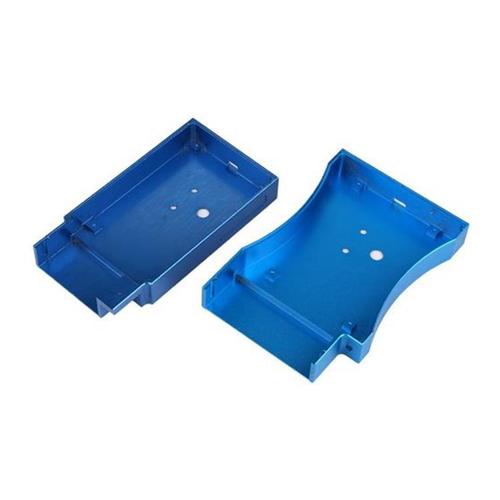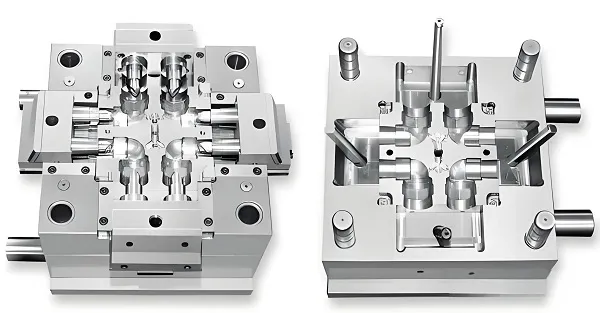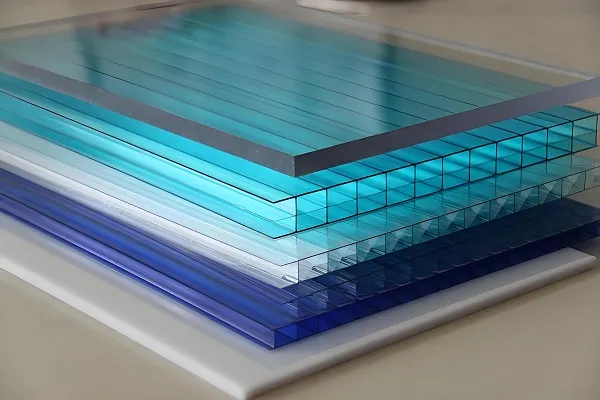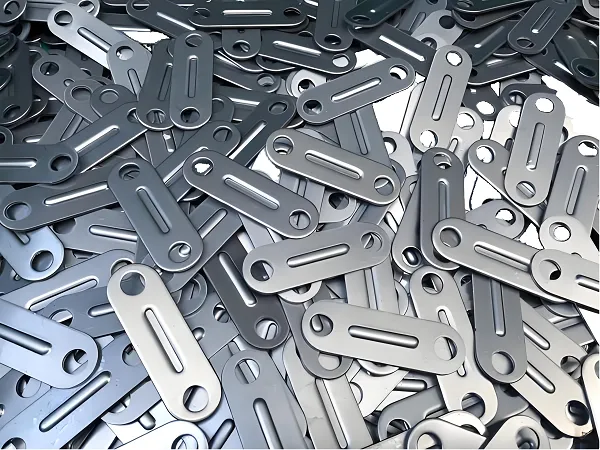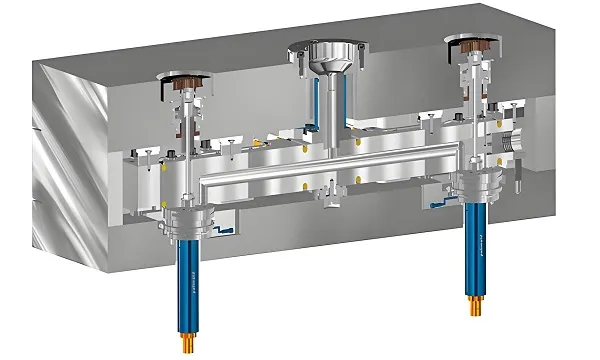Material Selection: The Right Aluminum is the Foundation
When it comes to making aluminum shells, choosing the right material is half the battle! The most commonly used ones are 6061 and 6063 aluminum alloys. 6061 aluminum alloy boasts high strength and good toughness, with a tensile strength of around 260MPa and decent hardness. It’s suitable for parts like aluminum shells around automobile engines that need to withstand certain pressure and impact. 6063 aluminum alloy, on the other hand, focuses on appearance and precision. It has excellent hot extrusion performance, and the surface finish of the aluminum shells made from it can reach Ra0.8 – Ra1.6μm. It’s often used for aluminum shells of electronic products, such as mobile phones and tablet computers. However, aluminum alloys have a “weakness” – a large coefficient of thermal expansion, almost twice that of steel. When heated during machining, they are prone to deformation, which poses many challenges to the machining process.
Technical Core: The “Magic Control” of the CNC System
CNC machining of aluminum shells relies on the CNC (Computer Numerical Control) system to issue commands. The X, Y, Z axes and rotary axes of the machine tool are like “soldiers” following orders, moving according to the prepared CNC program. First, draw the 3D model of the aluminum shell in CAD software, just like building blocks, to determine the shape and size. Then, use CAM software to generate machining codes, telling the machine tool where to start cutting, how to cut, and how deep to cut. For example, when machining an aluminum shell with complex curved surfaces, a five-axis CNC machine tool allows the cutting tool to “sculpt” from different angles, accurately restoring the designed shape. The machining accuracy can be controlled within ±0.01mm, which is much more precise than manual machining!
Machining Process: A Meticulous Task with Every Step Indispensable
- Preparatory Stage: When receiving the aluminum shell drawings, engineers need to carefully study key parameters such as dimensional tolerances and surface roughness. For example, for mobile phone aluminum shells, the wall thickness tolerance requirement is ±0.05mm, so a high-precision machining process must be selected. After choosing the material, appropriate work-holding fixtures also need to be prepared. Vacuum chucks, for instance, are very suitable for adsorb thin-walled aluminum shells. They can fix the workpiece without causing deformation. At the same time, debug the machine tool, and check accuracy indicators such as spindle runout and guideway straightness to ensure the machine tool is in good condition.
- Machining Stage: In rough machining, remove excess material vigorously. Generally, use a large-diameter end mill, and the cutting depth can reach 3 – 5mm to quickly mill out the approximate shape of the aluminum shell. For finish machining, switch to smaller tools to “refine the details” slowly. Use ball nose end mills to process curved surfaces and ensure that the surface roughness meets the standard. Drilling and tapping also need to be carried out in order, and the positional accuracy error of the holes should not exceed ±0.1mm. During the machining process, the cutting fluid should be sprayed vigorously to take away heat, prevent thermal deformation of the aluminum shell, and flush away chips to avoid scratching the surface.
- Post-processing Stage: After machining, give the aluminum shell a “bath” first. Use ultrasonic cleaning to remove residual cutting fluid and chips. Then, use a coordinate measuring machine to check the dimensions one by one. If the hole diameter is 0.02mm smaller, rework is required. For shells with special surface requirements, anodizing treatment is also needed, which can not only enrich the color of the aluminum shell but also increase its wear resistance by 3 – 5 times.
Machining Difficulties: Every Step is a “Level – Passing Game”
Machining thin-walled aluminum shells is the most troublesome! Aluminum shells with a wall thickness of only 0.8 – 1.2mm are like “fragile eggshells”. If the cutting force is slightly too large or the clamping force is uneven, they will deform immediately. For aluminum shells with complex internal cavity structures, it’s very difficult for the cutting tool to reach in for machining, and the chips cannot be discharged smoothly. They are likely to stay inside and scratch the surface, affecting dimensional accuracy and surface quality. In addition, tapping threads on aluminum shells is also challenging. Since aluminum alloy is too soft, problems such as broken threads and slippery threads are prone to occur during tapping.
Machining Tips: The “Unique Secrets” of Experienced Workers
Tool selection is crucial! For rough machining, use coated cemented carbide tools. TiAlN coating can increase the tool’s wear resistance by 30%. For finish machining, use diamond-coated tools to achieve a smooth and shiny surface. Cutting parameters need to be adjusted flexibly. When machining thin-walled aluminum shells, increase the cutting speed to 800 – 1200m/min and reduce the feed rate to 0.05 – 0.1mm/r to reduce cutting force. Tool path planning is also very important. Adopt spiral tool entry and layered cutting methods to avoid directly “biting” the material with vertical tool entry and prevent the aluminum shell from deforming.
Characteristic Advantages: Standing Out with Strength
CNC-machined aluminum shells feature high precision and good consistency. The dimensional error of aluminum shells in the same batch does not exceed ±0.03mm, making them especially suitable for mass production. Moreover, they have excellent heat dissipation performance. The thermal conductivity of aluminum alloy is more than three times that of steel. For example, power supply aluminum shells can quickly dissipate heat, ensuring the stable operation of internal components. Coupled with a variety of surface treatment processes, such as anodizing, sandblasting, and electroplating, they have a great appearance, which makes them extremely popular in the electronics industry.
Application Fields: The “figure of Aluminum Shells Everywhere”
In the 3C product field, the aluminum shells of mobile phones and laptops not only feel good but also can prevent electromagnetic interference. In the automotive industry, battery aluminum shells and motor aluminum shells are lightweight and can ensure strength, helping vehicles reduce fuel consumption. In the medical device field, aluminum shells are clean, hygienic, and easy to clean. For example, the shells of patient monitors use CNC-machined aluminum shells, and their protection level can reach IP65.
Common Machining Problems and Solutions
- Deformation Problem: In addition to optimizing cutting parameters, step-by-step machining can also be adopted. Leave a margin of 0.5 – 1mm during rough machining, and then perform finish machining after stress relief. Or use liquid nitrogen cooling to reduce the temperature of the cutting area to -196℃, which can greatly reduce thermal deformation.
- Threaded Hole Machining Problem: Chamfer the bottom hole before tapping to make it easier for the tap to enter. Use special tapping oil for aluminum alloy, whose lubrication effect is three times better than that of ordinary cutting fluid, which can effectively prevent broken threads.
- Surface Scratch Problem: Regularly check the tool wear condition. Replace the tool in time when the edge wear exceeds 0.05mm. Keep the cutting fluid clean during machining to prevent chips from scratching the surface again.
